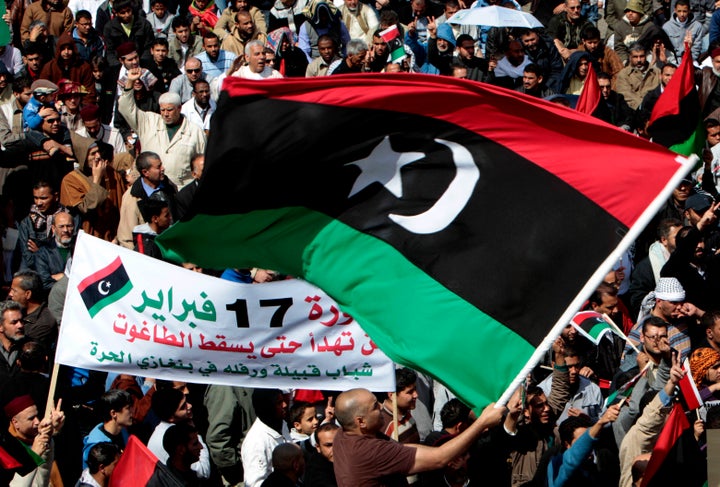
Establishing a no-fly, no-drive zone in Libya will be a complex military operation, but the United States and its allies have accomplished similar feats more than once in recent history.
Both over the Balkans in the 1990s and over Iraq from 1991 to 2003, strike aircraft -- A-10s, F-15s and F-16s -- drove endless circles in the sky, their pilots using radar and their own eyeballs to look for illegal activity. That level of constant surveillance, however, requires a large supporting cast.
The point of the U.N.-authorized operation is to prevent Libyan head of state Muammar Gaddafi from using his aircraft or tanks and other armored vehicles against civilians or the rebels who still cling to Benghazi and other towns in eastern Libya. Already, civilian air traffic reportedly has been halted within Libya. Once the zone is declared operational, any aircraft will be liable to be shot down, and any ground combat vehicles not in retreat will be targeted.
Maintaining the zone will require aerial refueling tankers, as well as radar-monitoring AWACS (Airborne Warning and Control System) command aircraft, to manage the complex choreography of inbound and outbound aircraft, and JSTARS (Joint Surveillance Target Attack Radar System) jets. The latter craft are modified Boeing 707 airliners packed with electronics that enable onboard analysts to find, identify, track and target individual tanks and other armored vehicles. That target data is passed on to the precision-guided weapons that are launched from strike aircraft.
It is likely that the United States will provide AWACS and JSTARS as well as aerial refueling tankers, while the British and French contribute strike fighters, although U.S. Air Force and Navy jets are positioned to fly missions as well.
An initial strike package of jets designed to jam and destroy enemy radar would precede the establishment of a no-fly zone. But the JSTARS can provide surveillance and targeting from outside Libyan missile range -- and unmanned drone aircraft could be used as well to avoid the remote possibility of having pilots shot down over Libya.
These operations could cost between $100 million and $300 million per week, depending on the number of aircraft involved, according to an analysis by the Center for Strategic and Budgetary Assessments, a Washington think tank.
If Gaddafi refuses to obey a cease-fire order, the international coalition could agree on a hard strike against airfields and armored columns, troop barracks, military headquarters and other military facilities that already have been identified and targeted. A full-out strike might cost between $500 million and $1 billion, according to the CSBA analysis.
Some of that tab might be picked up by Arab states in the Persian Gulf, which have promised to help.
